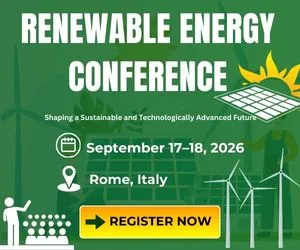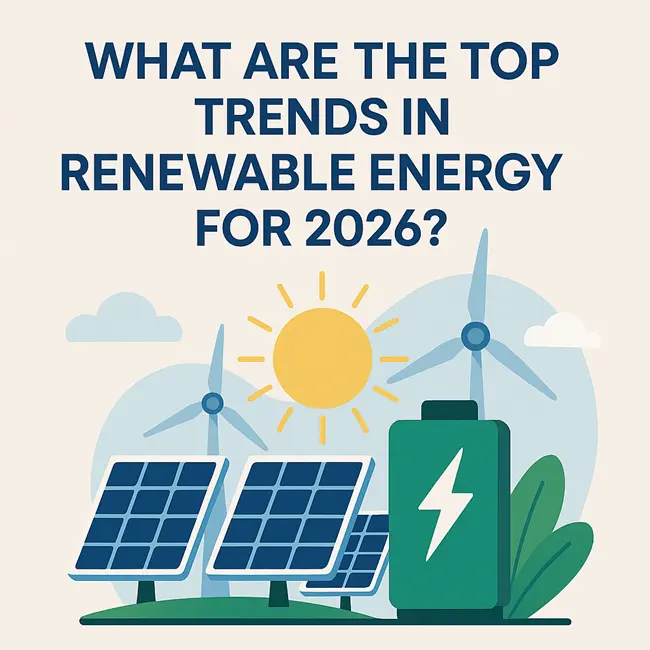As the world accelerates its push toward net-zero emissions, renewable energy is no longer just an option—it’s a global imperative. In 2026, the renewable energy landscape will continue evolving rapidly, powered by groundbreaking innovations, bold policy shifts, and increased investment. Whether you’re a policymaker, investor, researcher, or climate advocate, staying ahead of these trends is key.
Here are the top renewable energy trends to watch in 2026.
1. Energy Storage Breakthroughs
One of the biggest bottlenecks in renewable adoption is storage. In 2026, we’ll see:
Wider deployment of next-gen lithium-silicon and sodium-ion batteries
Growth of grid-scale storage systems
More investment in long-duration energy storage (LDES) to balance intermittent sources like wind and solar
These advancements will make 24/7 clean energy a more realistic goal.
2. Solar Power: Beyond Panels
Solar energy remains a frontrunner, but 2026 will bring:
Perovskite solar cells hitting commercial markets, offering higher efficiency and lower cost
Floating solar farms expanding across Asia and Europe
Increased use of Building-Integrated Photovoltaics (BIPV)—solar materials replacing conventional building surfaces
Expect solar to integrate more seamlessly into urban infrastructure and consumer lifestyles.
3. Green Hydrogen Goes Global
Green hydrogen is shifting from hype to reality. In 2026:
More countries will launch national hydrogen strategies
Electrolyzer costs will drop due to scale and innovation
Hydrogen hubs in Europe, Asia, and the Middle East will drive global supply chains
This trend supports decarbonizing hard-to-abate sectors like steel, cement, and aviation.
4. Offshore Wind Expansion
Offshore wind will soar in 2026, especially:
Floating offshore wind will unlock deeper waters with stronger, more consistent wind
Major projects in the North Sea, U.S. East Coast, and Asia-Pacific
Hybrid systems that combine wind + hydrogen or solar
Offshore wind is critical for nations with limited land area but strong maritime resources.
5. Smart Grids and AI Integration
Digital transformation is coming to energy systems:
Smart grids using AI and IoT for real-time demand-response
Decentralized energy markets powered by blockchain
Increased use of predictive analytics in grid management
These technologies make energy distribution smarter, more resilient, and user-centric.
6. Bioenergy and Waste-to-Energy Tech
Expect a shift toward circular energy systems:
Expansion of biogas and biomass energy in rural regions
Growth in waste-to-energy technologies that recover power from organic or plastic waste
Advanced algae-based biofuels for aviation and transport
Bioenergy will complement wind and solar in delivering base-load renewable power.
7. ESG Investment and Policy Shifts
In 2026, we’ll see:
Sustainable finance accelerating clean energy startups
More carbon pricing and emissions-trading schemes
Stronger regulatory push toward climate-aligned portfolios
Governments and financial institutions will play a growing role in scaling clean tech solutions.
8. Clean Energy in Emerging Markets
Renewable energy adoption will expand rapidly in:
Sub-Saharan Africa, South Asia, and Southeast Asia
With solar microgrids and affordable battery solutions
Supported by international partnerships and climate finance
These regions will become growth hotspots for clean energy innovation and access.
Final Thoughts: The Future Is Renewable
2026 will mark a major leap in the global renewable energy transition. With smarter grids, better storage, affordable solar, and scalable hydrogen, the energy systems of tomorrow are becoming a reality today.
Bonus Tip: Join the Conversation at GRCREN 2026
Want to stay ahead of these trends and network with global experts? Don’t miss the
Global Renewable Energy Conference (GRCREN 2026)
Rome, Italy | 📅 September 17–18, 2026
A unique platform for researchers, innovators, and policymakers in the renewable energy space.



COMMENTS